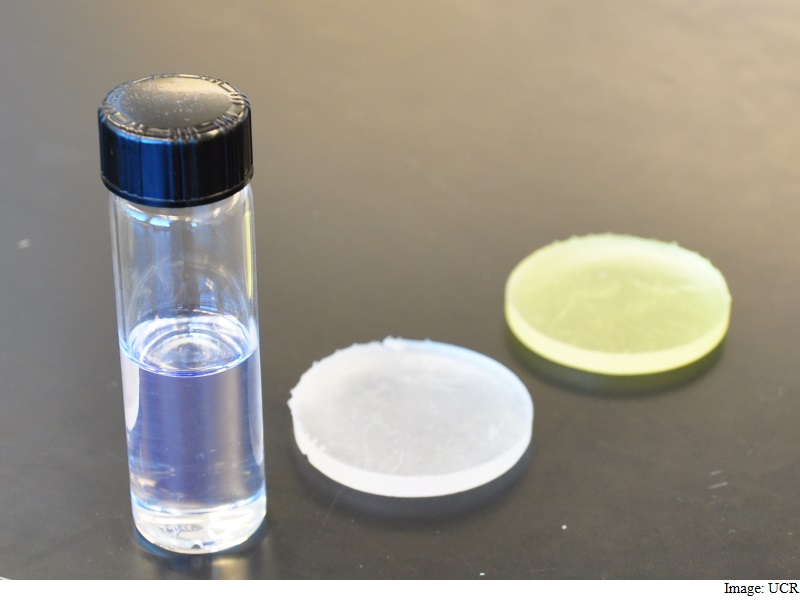- Home
- Laptops
- Laptops News
- Commercial 3D Printers Could Be Toxic: Study
Commercial 3D Printers Could Be Toxic: Study

"These 3D printers are like tiny factories in a box," said William Grover, assistant professor of bioengineering in Bourns College of Engineering at University of California - Riverside, US.
"We regulate factories. We would never bring one into our home. Yet, we are starting to bring these 3D printers into our homes like they are toasters," Grover noted.
The researchers studied two common types of 3D printers: one that melts plastic to build a part, and another that uses light to turn a liquid into a solid part.
They found that parts from both types of printers were measurably toxic to zebrafish embryos, and parts from the liquid-based printer were the most toxic.
The research comes as the popularity of 3D printers is soaring.
The value of the 3D printing market grew from $288 million (roughly Rs. 1,895 crores) in 2012 to $2.5 billion (roughly Rs. 16,451 crores) in 2013 and is projected to grow to $16.2 billion (roughly Rs. 1,06,629 crores) by 2018, according to a report by global market analysis firm Canalys.
And, as the price of 3D printers continues to drop -printers that use melted plastic are currently available for as little as $200 (roughly Rs. 13,000), and the liquid-based printer used in this study can be bought for less than $3,000 (roughly Rs. 1,98,000) - they are moving beyond industry and research labs to homes and small businesses, the study pointed out.
While the embryos exposed to parts from the plastic-melting printer had slightly decreased average survival rates compared to control embryos, the embryos exposed to parts from the liquid-resin printer had significantly decreased survival rates, with more than half of the embryos dead by day three and all dead by day seven.
And of the few zebrafish embryos that hatched after exposure to parts from the liquid-resin printer, 100 percent of the hatchlings had developmental abnormalities.
The results raise questions about how to dispose of parts and waste materials from 3D printers.
The findings appeared in the Environmental Science & Technology Letters.
For the latest tech news and reviews, follow Gadgets 360 on X, Facebook, WhatsApp, Threads and Google News. For the latest videos on gadgets and tech, subscribe to our YouTube channel. If you want to know everything about top influencers, follow our in-house Who'sThat360 on Instagram and YouTube.
Related Stories
- Galaxy S24 Series
- MWC 2024
- Apple Vision Pro
- Oneplus 12
- iPhone 14
- Apple iPhone 15
- OnePlus Nord CE 3 Lite 5G
- iPhone 13
- Xiaomi 14 Pro
- Oppo Find N3
- Tecno Spark Go (2023)
- Realme V30
- Best Phones Under 25000
- Samsung Galaxy S24 Series
- Cryptocurrency
- iQoo 12
- Samsung Galaxy S24 Ultra
- Giottus
- Samsung Galaxy Z Flip 5
- Apple 'Scary Fast'
- Housefull 5
- GoPro Hero 12 Black Review
- Invincible Season 2
- JioGlass
- HD Ready TV
- Laptop Under 50000
- Smartwatch Under 10000
- Latest Mobile Phones
- Compare Phones
- Huawei Pura 70 Pro+
- Huawei Pura 70 Ultra
- Tecno Camon 30 Premier 5G
- Motorola Edge 50 Fusion
- Oppo A1i
- Oppo A1s
- Motorola Edge 50 Ultra
- Leica Leitz Phone 3
- Asus ZenBook Duo 2024 (UX8406)
- Dell Inspiron 14 Plus
- Realme Pad 2 Wi-Fi
- Redmi Pad Pro
- Cult Shock X
- Fire-Boltt Oracle
- Samsung Samsung Neo QLED 8K Smart TV QN800D
- Samsung Neo QLED 4K Smart TV (QN90D)
- Sony PlayStation 5 Slim Digital Edition
- Sony PlayStation 5 Slim
- IFB 2 Ton 3 Star Inverter Split AC (CI2432C323G1)
- Daikin 1 Ton 3 Star Inverter Split AC (FTKL35UV16W+RKL35UV16W)

















